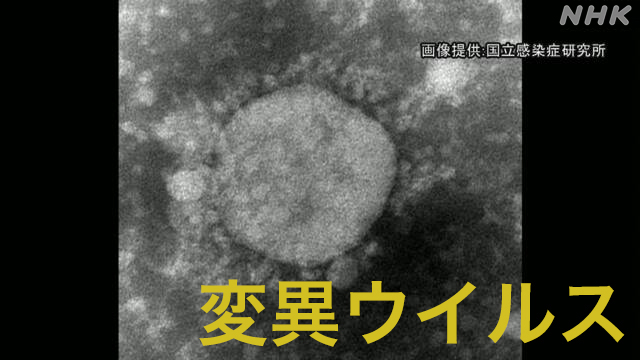The highly infectious, mutated coronavirus has already accounted for 80% of the total in Kansai, and more than 80% of the total will be replaced by the conventional virus in Tokyo and other metropolitan areas in 1 metropolitan area and 3 prefectures by the beginning of next month. The National Institute of Infectious Diseases has compiled the results of the estimation.
The virus with the mutation "N501Y", which was first confirmed in the United Kingdom, was analyzed by the National Institute of Infectious Diseases, and the "effective reproduction number", which indicates the ease of spread of infection, was 1.32 times higher on average than the conventional virus. It is believed to be rapidly replacing previous viruses.
Based on the results of tests conducted by the National Institute of Infectious Diseases to check for mutant viruses, the new estimate as of April 13 shows that there are 2 prefectures and 1 prefecture in Osaka, Hyogo, and Kyoto. The number of mutant viruses began to increase rapidly in March, and it is estimated that more than half of them were replaced by mutant viruses by the end of March.
After that, it is estimated that it accounts for about 75% of the total as of early April, and already 80% at this time, and if this situation continues, it is expected that almost all of them will be replaced by mutant viruses by the end of May.
In addition, in Tokyo, Kanagawa, Chiba, and Saitama prefectures, the number of mutant viruses of this type began to increase after mid-March, which was about 10% at the beginning of April, but it is increasing rapidly. It is being promoted, and it is estimated that 80% to 90% will be replaced by mutant viruses in early May if this situation continues.
In addition, it is estimated that most of the four prefectures of Aichi, Gifu, Mie, and Shizuoka, as well as Okinawa prefecture, will become mutant viruses in early May.
Since October last year, the number of mutant viruses of the same type has increased rapidly in the United Kingdom, and it is estimated that almost all of them have been replaced between February and March, and the same thing may happen in Japan.
Motoi Suzuki, director of the National Institute of Infectious Diseases Epidemiology Center for Infectious Diseases, said, "If we keep pace, it is estimated that most of the viruses in Japan will have the N501Y mutation in the first half of May. Since the effects of such measures are not taken into consideration, the data may change in the future depending on the measures. "

